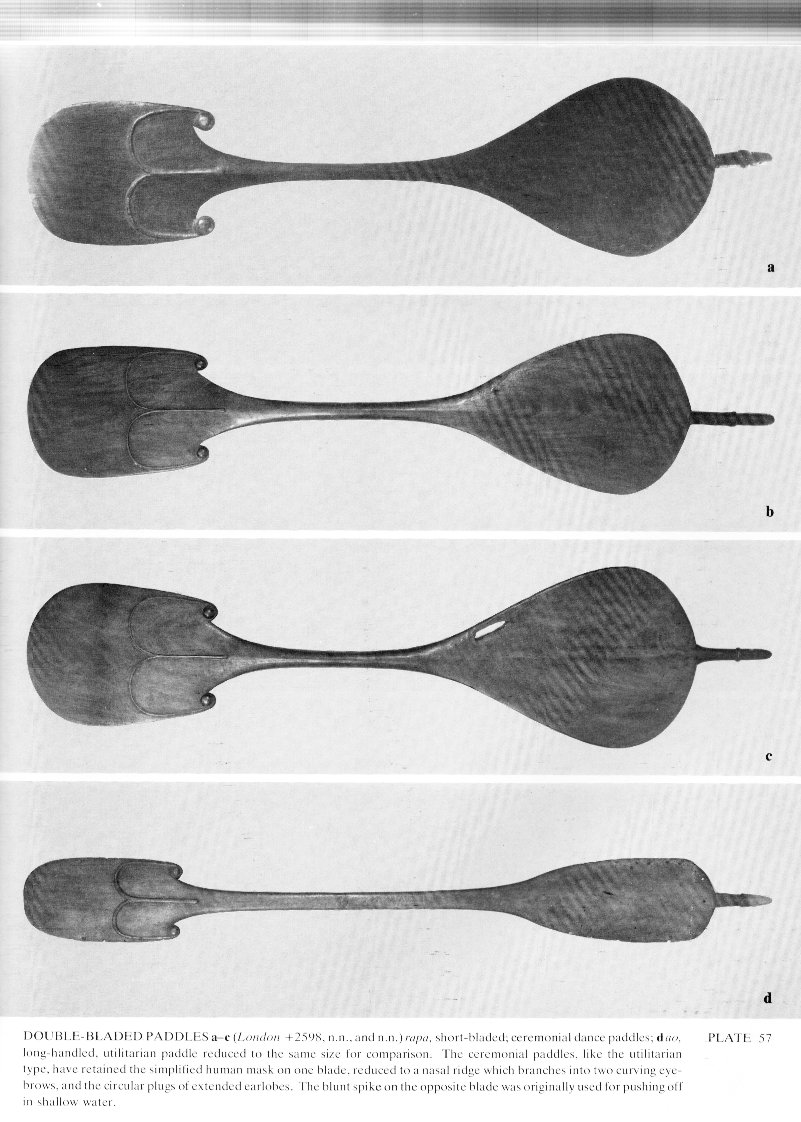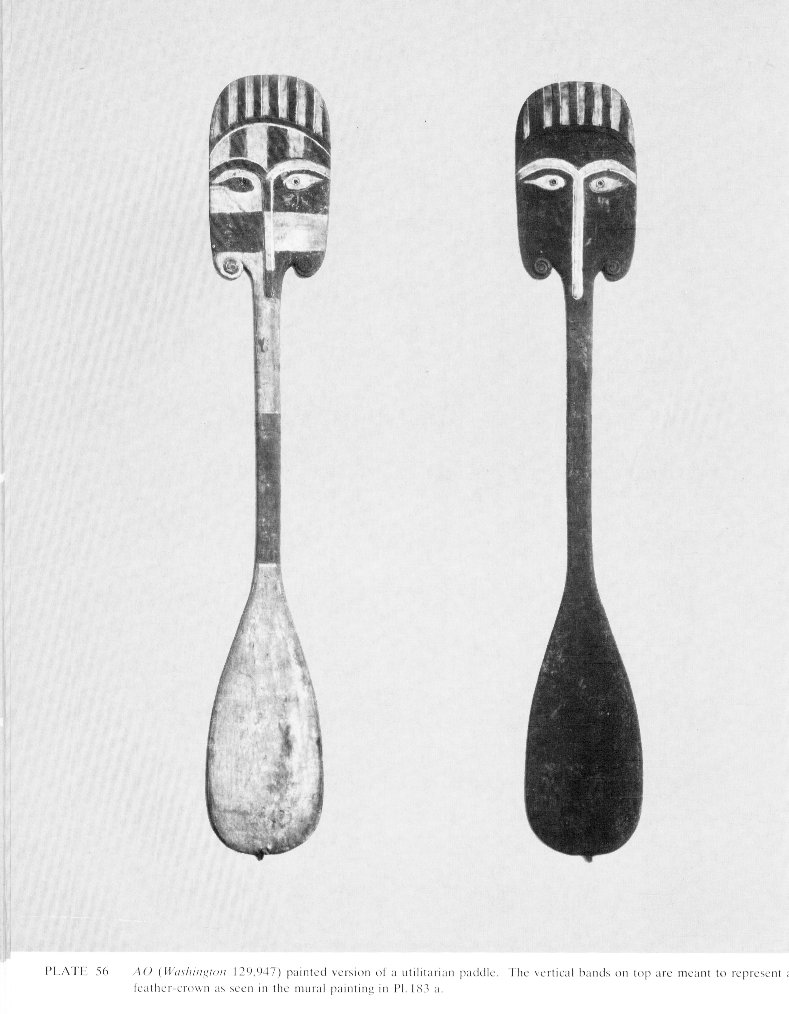| AO "The ao and rapa differ from each other mainly in size and in decoration, but are otherwise closely related. Both were double-bladed paddles twirled and shaken in the hand during ceremonial dances.
The ao was the larger of the two types, with a total length that could exceed 6 ft. (2 m.).
One blade of the paddle, usually pointing up during dances, has a conventionalized human face carved and painted on each of its sides. The blade itself is carved flat as on a functional paddle, with almost parallel edges and a rounded distal end.
The nose is very long and extremely narrow, and forks into two prominent eyebrows. This curved, Y-shaped combination of nose and eyebrows is slightly raised in relief. The eyes are carved and painted much larger than the mouth, which is either reduced to a minimum or lacking. The ears, however, are invariably present and carved in a conventionalized manner as two downward projecting lobes with circular earplugs. One very old and worm-eaten sample (Boston 64845) has fish vertebrae inserted as earplugs. The specimen, collected by Agassiz' Albatross Expedition as late as 1904-5, has doubtless been kept hidden in a cave. A large portion of the upper blade, corresponding to the broad and tall forehead, is covered by dense rows of vertically painted stripes that may indicate hair although in some specimens they definitely assume the aspects of a feather-crown of the type common in aboriginal Easter Island. Some specimens have vertical tear marks painted as parallel stripes running from the bases of the large eyes down across the chin. This 'weeping-eye' motif is particularly pronounced on the ancient ao symbols preserved as mural paintings on the slabs in the ceremonial houses of Orongo (Ferdon, 1961, Figs. 65 b, f and Pl. 29 c; this vol., 183 a).Some faces on ao paddles are painted with geometric fields suggesting tattoo. Only one twin-faced blade of the ao is painted; the rest of the paddle is left polished and plain. A slim handle with an oval cross-section that becomes almost circular at mid-length connects the painted blade with the other one which is undecorated. It has the same outline except for the lack of indentations carved below the earlobes of the decorated blade. In some specimens the second blade is slightly narrower and has a rounded rectanguloid outline. A fingerlike projection with a ring-shaped band in relief around its midsection is sometimes, but not always, carved at the center of the distal end of this second blade. In some specimens the ring is replaced by a steplike transition from a wider upper part to a narrower lower part. This extension corresponds to the knob carved elsewhere on some functional paddles and serves for pushing off or staking operations." (Heyerdahl 3) |


